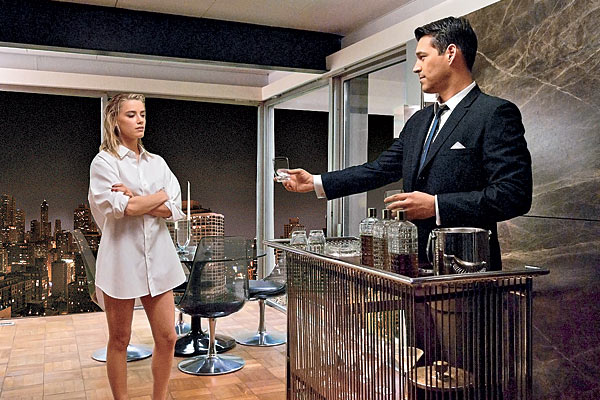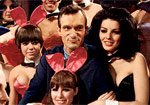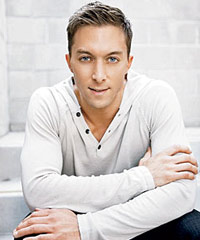
A scene from the pilot, starring Amber Heard and Eddie Cibrian
Related:

THE BIG PARTY »
Hugh Hefner and the Playboy era of the 1950s
When NBC’s new drama The Playboy Club starts on September 19, Chicago will play as central a role as Eddie Cibrian, who stars as man about town Nick Dalton. The man behind that man is actually creator/executive producer/writer Chad Hodge, a 34-year-old Highland Park native and Northwestern grad. Hodge is quick to explain that his 1960s-set series, about the original club, is no history lesson. “It’s about everyone wanting to know what it was like for the first Playboy Bunnies,” he says.
With its 1960s setting, martini lunches, retro fashion, and shifting American values, The Playboy Club is inevitably being likened to Mad Men. Is that a fair comparison?
I have all the respect in the world for Mad Men, but 90 seconds into watching the first show no one will make that comparison again. The Playboy Club has a completely different tone, pace, and character. It’s a different world. There’s a lot of music in it, too. It’s more like Cabaret or Chicago than it is like Mad Men.
In the first trailer, Hugh Hefner’s voice-over is all about “the steaming, corrupt, crime-filled Windy City.” It reminds me a bit of Sex and the City’s New York treatment. Is Chicago going to be a character in itself?
Of course, yes. The Playboy Club is at the heart of the series, sure, but all the Bunnies, and Nick, have lives. There’s a theme of the front and the back in this show—the front of the club and the back of the club, what’s going on onstage and what’s going on in the dressing room. It’s also about what’s happening in the club and what’s happening in the city, with the politics and the Mob and the church. In each episode, we turn our lens on an aspect of that vast landscape to tell the story.
Nailing down the details of the era—both in the club and in the city—must have required tons of research.
For sure. I read every book, talked to former Bunnies, and spent days and days in the Playboy Mansion, where Hef keeps his scrapbooks. He’s a major archivist and keeps every single thing—a photograph, a phone number on a napkin, a newspaper clipping. He has five people employed full-time, still, who keep his more than 2,500 scrapbooks. I went through a lot of those and learned everything I could. Then the question was, Who do I want these people to be? Who are we telling stories about each week?

The Playboy Club creator, Chad Hodge
Some of the fun of watching a show set in the 1960s is in the vintage costumes and set design. Obviously that’s a production designer’s territory, but which of those minor details were predetermined by your research?
Mad Men is fastidious about its accuracy, down to a pencil on a desk. In our show, we take things and we go, “OK, that’s exactly how it looked, now how can we make it a little prettier? Let’s pop it a little bit more.” This show has a sort of patina to it that you’ll see with the first episode. The original Bunnies, when I talk to them—or Hef, when I talk to him—they have a twinkle in their eye when they talk about working at the Playboy Club. It probably wasn’t as amazing as they remember it, but I want the show to look like it does in their recollection. It’s a perfected memory, a bit of a fantasy. Which fits right into the theme of the show because the Playboy Club was a fantasy in its own time. To go there was to enter a different world. They called it Disneyland for adults.
You grew up outside Chicago, and I heard your mom was an extra on set. How did she do?
She was an extra for four days and had a blast. She’s already asking for a speaking role.
Photography: (Hodge) Courtesy of NBC; (The Playboy Club) Matt Dinerstein/NBC


